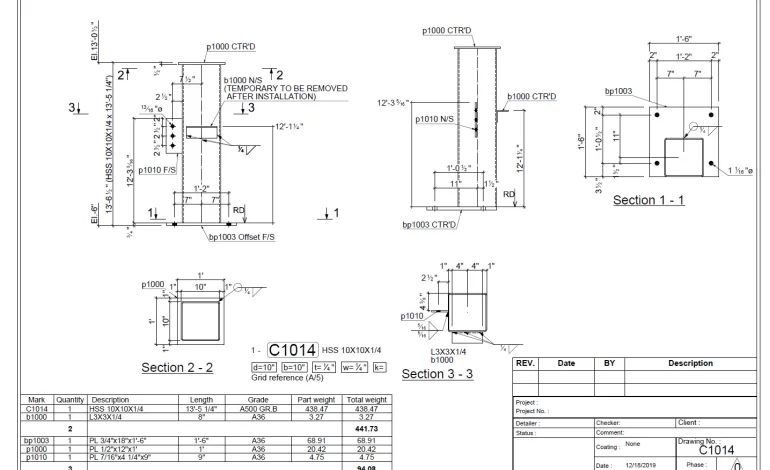Concrete is one of the most adaptable and versatile materials used in the construction industry and is one of the most widely used materials in construction projects. Wet concrete will do two things — get hard and crack. We want concrete to get hard, but we also need to minimize some types of cracking and eliminate other types.
Temperature and shrinkage cracking in concrete flat work, rather than letting them appear wherever they want as a few visible meandering cracks, can be minimized by dispersing them throughout the concrete into many, almost invisible cracks, by use of welded wire mesh reinforcing or nylon or steel fiber reinforcing.
Cracking caused by sudden catastrophic structural failure of concrete beams, girders and elevated slabs must be avoided at all costs. Concrete is strong in compression but weak in tension. A beam or elevated slab that flexes under load will be in compression at the top and in tension at the bottom. Steel bars are strong in tension and are the ideal choice to combine with concrete to produce reinforced concrete that is strong in both tension and compression.
Steel reinforcing bars are generally round and usually “deformed”, meaning that they have ridges stamped on them to better anchor them in concrete. They are generally made in diameters of 3/8″ up to 2-1/4″. Their size is designated by a number, the number representing the number of eighths of an inch in the diameter; therefore a No. 4 bar is 1/2″ in diameter and a No. 10 bar is 1-1/4″ in diameter. Some steel reinforcing bars are straight; others will have bends or hooks in them, depending on their function in the concrete. Reinforcing spirals for round concrete columns and foundation caissons are made of smooth bars bent into a spiral.
Because the location of reinforcing steel within concrete is critical in most cases (steel must be placed where stresses are the greatest), reinforcing accessories are required to position and hold the steel in place. Accessories include beam bolsters, slab bolsters, individual and continuous high chairs, joist chairs and bar chairs. Steel bars are wired to these accessories so that their original position will be maintained during the placement and consolidation of wet concrete.
A general estimator will probably not estimate the cost of steel reinforcing for a complex reinforced concrete structure; to do so will require special training and a thorough working knowledge of the “rules” as set forth in the Manual of Standard Practice, published by the Concrete Reinforcing Steel Institute. Steel reinforcing fabricators will do their own material take-off and will quote the concrete subcontractor or general contractor for delivery of all reinforcing steel FOB job site. The contractor must then get an estimate from an erection firm that will use, as a basis for their quote, the tonnage given by the fabricator or they will do their own take-off. In some cases the fabricator will quote for both furnishing and erecting the steel reinforcing.
Innovative Estimating
The construction industry follows the economy, and as the economic downturn continues, any recovery in construction still seems far off. As a result, projects available for bidding have become fewer and more competitive as companies seek to provide work for their personnel and maintain sustainable income.
In addition to fewer projects to estimate and bid, the projects that are constructed are more difficult to estimate compared to projects during periods of sustained growth in public and private construction? This difficulty is twofold. First, the reinforcing contractor needs to look for ways to be more competitive and innovative and, second; the projects being bid are placing a greater portion of risk on the contractor by the owners and public agencies.

